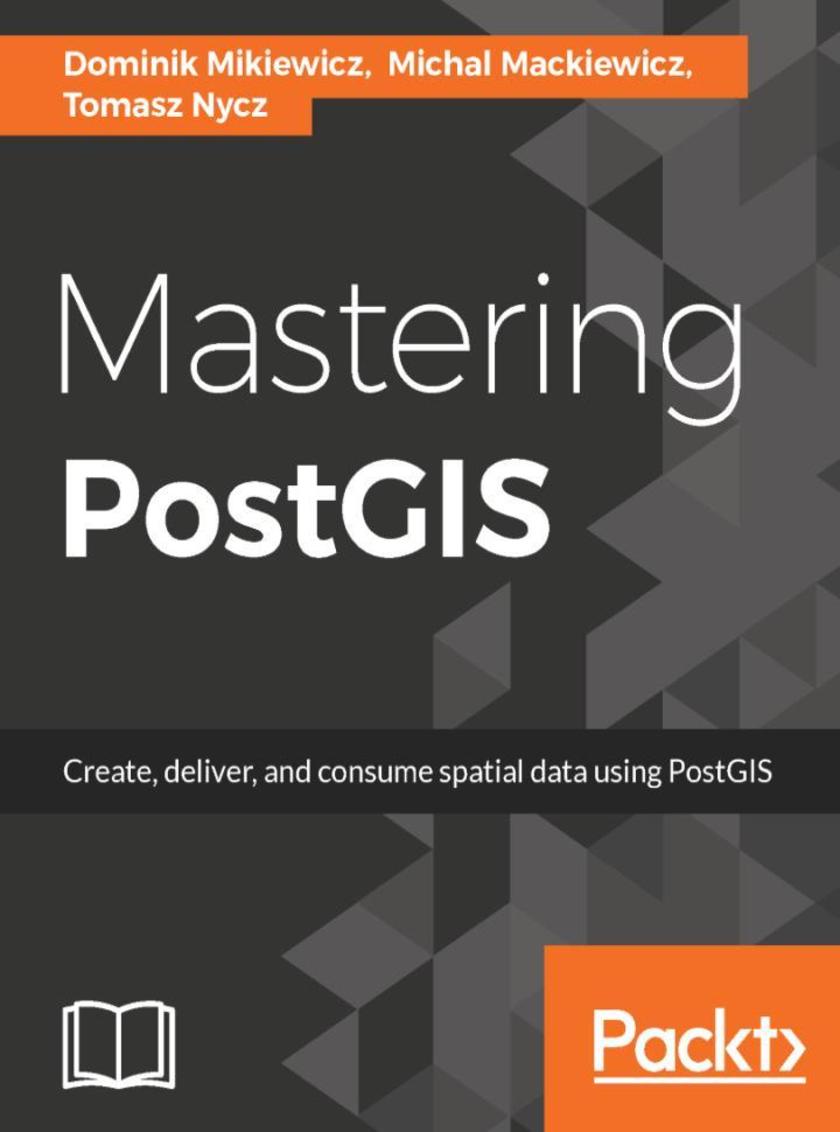
Mastering PostGIS
¥62.12
Write efficient GIS applications using PostGIS - from data creation to data consumption About This Book ? Learn how you can use PostGIS for spatial data analysis and manipulation ? Optimize your queries and build custom functionalities for your GIS application ? A comprehensive guide with hands-on examples to help you master PostGIS with ease Who This Book Is For If you are a GIS developer or analyst who wants to master PostGIS to build efficient, scalable GIS applications, this book is for you. If you want to conduct advanced analysis of spatial data, this book will also help you. The book assumes that you have a working installation of PostGIS in place, and have working experience with PostgreSQL. What You Will Learn ? Refresh your knowledge of the PostGIS concepts and spatial databases ? Solve spatial problems with the use of SQL in real-world scenarios ? Practical walkthroughs of application development examples using Postgis, GeoServer and OpenLayers. ? Extract, transform and load your spatial data ? Expose data directly or through web services. ? Consume your data in both desktop and web clients In Detail PostGIS is open source extension onf PostgreSQL object-relational database system that allows GIS objects to be stored and allows querying for information and location services. The aim of this book is to help you master the functionalities offered by PostGIS- from data creation, analysis and output, to ETL and live edits. The book begins with an overview of the key concepts related to spatial database systems and how it applies to Spatial RMDS. You will learn to load different formats into your Postgres instance, investigate the spatial nature of your raster data, and finally export it using built-in functionalities or 3th party tools for backup or representational purposes. Through the course of this book, you will be presented with many examples on how to interact with the database using JavaScript and Node.js. Sample web-based applications interacting with backend PostGIS will also be presented throughout the book, so you can get comfortable with the modern ways of consuming and modifying your spatial data. Style and approach This book is a comprehensive guide covering all the concepts you need to master PostGIS. Packed with hands-on examples, tips and tricks, even the most advanced concepts are explained in a very easy-to-follow manner. Every chapter in the book does not only focus on how each task is performed, but also why.
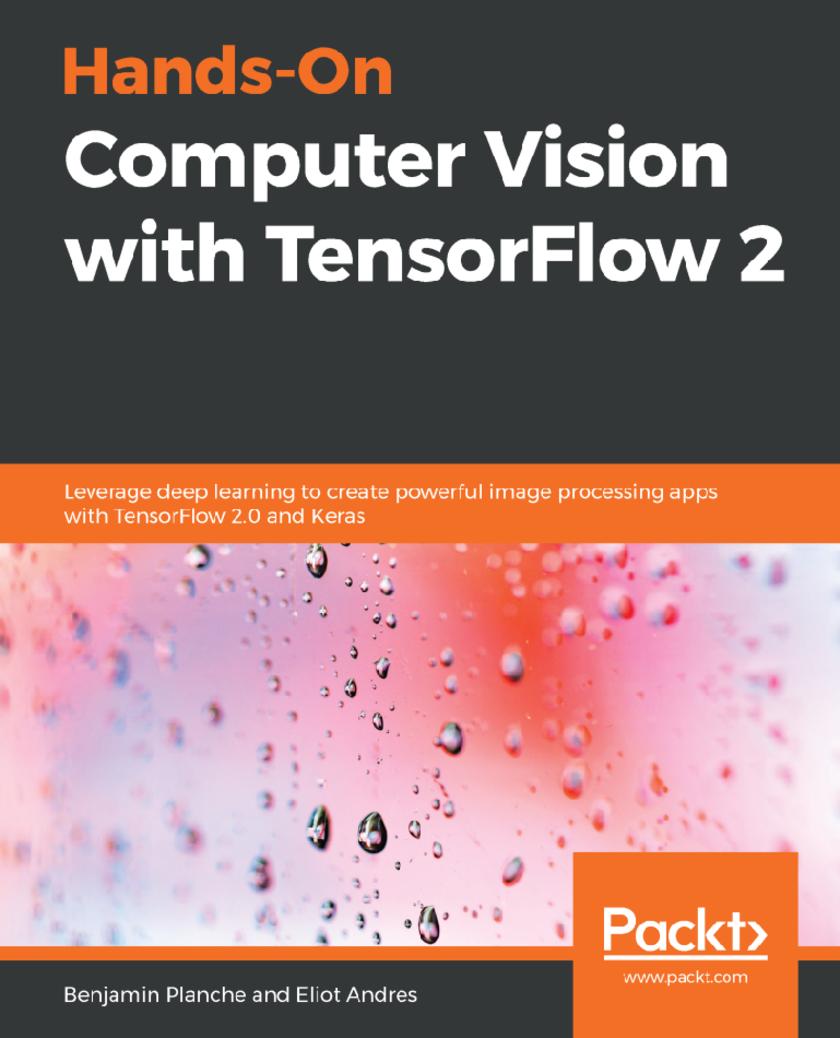
Hands-On Computer Vision with TensorFlow 2
¥62.12
A practical guide to building high performance systems for object detection, segmentation, video processing, smartphone applications, and more. This book is based on the alpha version of TensorFlow 2. Key Features * Discover how to build, train, and serve your own deep neural networks with TensorFlow 2 and Keras * Apply modern solutions to a wide range of applications such as object detection and video analysis * Learn how to run your models on mobile devices and webpages and improve their performance Book Description Computer vision solutions are becoming increasingly common, making their way in fields such as health, automobile, social media, and robotics. This book will help you explore TensorFlow 2, the brand new version of Google's open source framework for machine learning. You will understand how to benefit from using convolutional neural networks (CNNs) for visual tasks. Hands-On Computer Vision with TensorFlow 2 starts with the fundamentals of computer vision and deep learning, teaching you how to build a neural network from scratch. You will discover the features that have made TensorFlow the most widely used AI library, along with its intuitive Keras interface, and move on to building, training, and deploying CNNs efficiently. Complete with concrete code examples, the book demonstrates how to classify images with modern solutions, such as Inception and ResNet, and extract specific content using You Only Look Once (YOLO), Mask R-CNN, and U-Net. You will also build Generative Adversarial Networks (GANs) and Variational Auto-Encoders (VAEs) to create and edit images, and LSTMs to analyze videos. In the process, you will acquire advanced insights into transfer learning, data augmentation, domain adaptation, and mobile and web deployment, among other key concepts. By the end of the book, you will have both the theoretical understanding and practical skills to solve advanced computer vision problems with TensorFlow 2.0. What you will learn * Create your own neural networks from scratch * Classify images with modern architectures including Inception and ResNet * Detect and segment objects in images with YOLO, Mask R-CNN, and U-Net * Tackle problems in developing self-driving cars and facial emotion recognition systems * Boost your application’s performance with transfer learning, GANs, and domain adaptation * Use recurrent neural networks for video analysis * Optimize and deploy your networks on mobile devices and in the browser Who this book is for If you’re new to deep learning and have some background in Python programming and image processing, like reading/writing image files and editing pixels, this book is for you. Even if you’re an expert curious about the new TensorFlow 2 features, you’ll find this book useful. While some theoretical explanations require knowledge in algebra and calculus, the book covers concrete examples for learners focused on practical applications such as visual recognition for self-driving cars and smartphone apps.
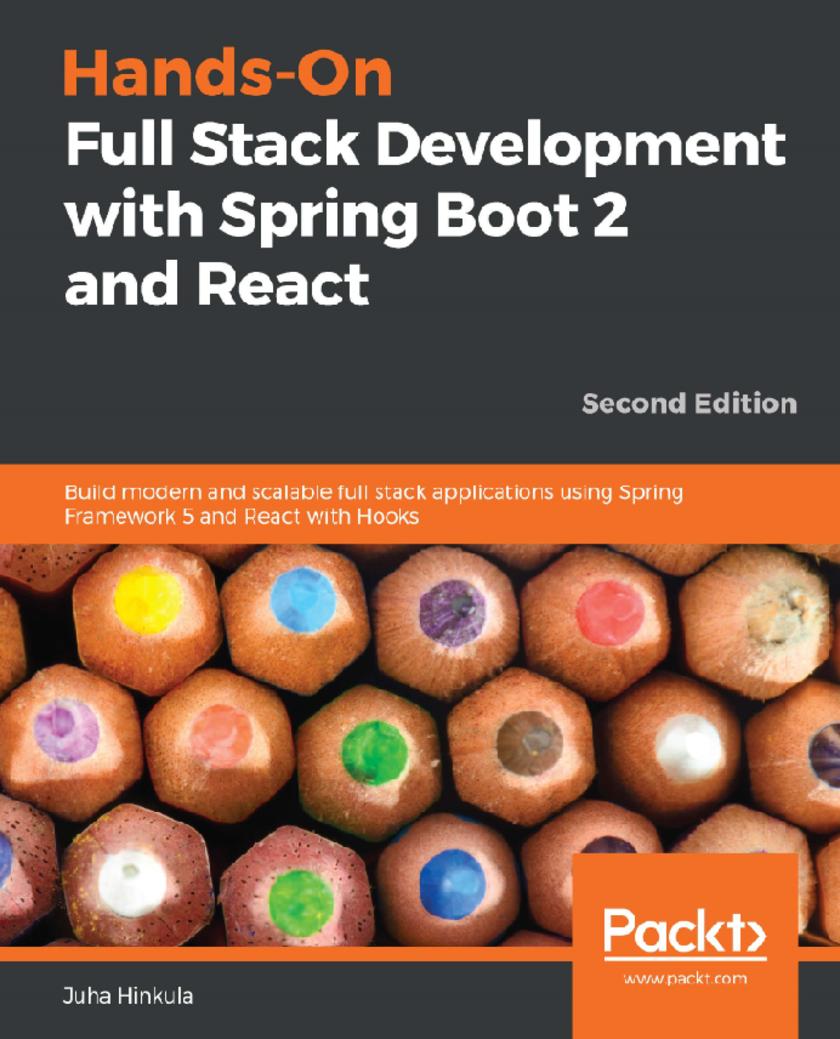
Hands-On Full Stack Development with Spring Boot 2 and React
¥62.12
A comprehensive guide to building full stack applications covering frontend and server-side programming, data management, and web security Key Features * Unleash the power of React Hooks to build interactive and complex user interfaces * Build scalable full stack applications designed to meet demands of modern users * Understand how the Axios library simplifies CRUD operations Book Description React Hooks have changed the way React components are coded. They enable you to write components in a more intuitive way without using classes, which makes your code easier to read and maintain. Building on from the previous edition, this book is updated with React Hooks and the latest changes introduced in create-react-app and Spring Boot 2.1. This book starts with a brief introduction to Spring Boot. You’ll understand how to use dependency injection and work with the data access layer of Spring using Hibernate as the ORM tool. You’ll then learn how to build your own RESTful API endpoints for web applications. As you advance, the book introduces you to other Spring components, such as Spring Security to help you secure the backend. Moving on, you’ll explore React and its app development environment and components for building your frontend. Finally, you’ll create a Docker container for your application by implementing the best practices that underpin professional full stack web development. By the end of this book, you’ll be equipped with all the knowledge you need to build modern full stack applications with Spring Boot for the backend and React for the frontend. What you will learn * Create a RESTful web service with Spring Boot * Grasp the fundamentals of dependency injection and how to use it for backend development * Discover techniques for securing the backend using Spring Security * Understand how to use React for frontend programming * Benefit from the Heroku cloud server by deploying your application to it * Delve into the techniques for creating unit tests using JUnit * Explore the Material UI component library to make more user-friendly user interfaces Who this book is for If you are a Java developer familiar with Spring, but are new to building full stack applications, this is the book for you.
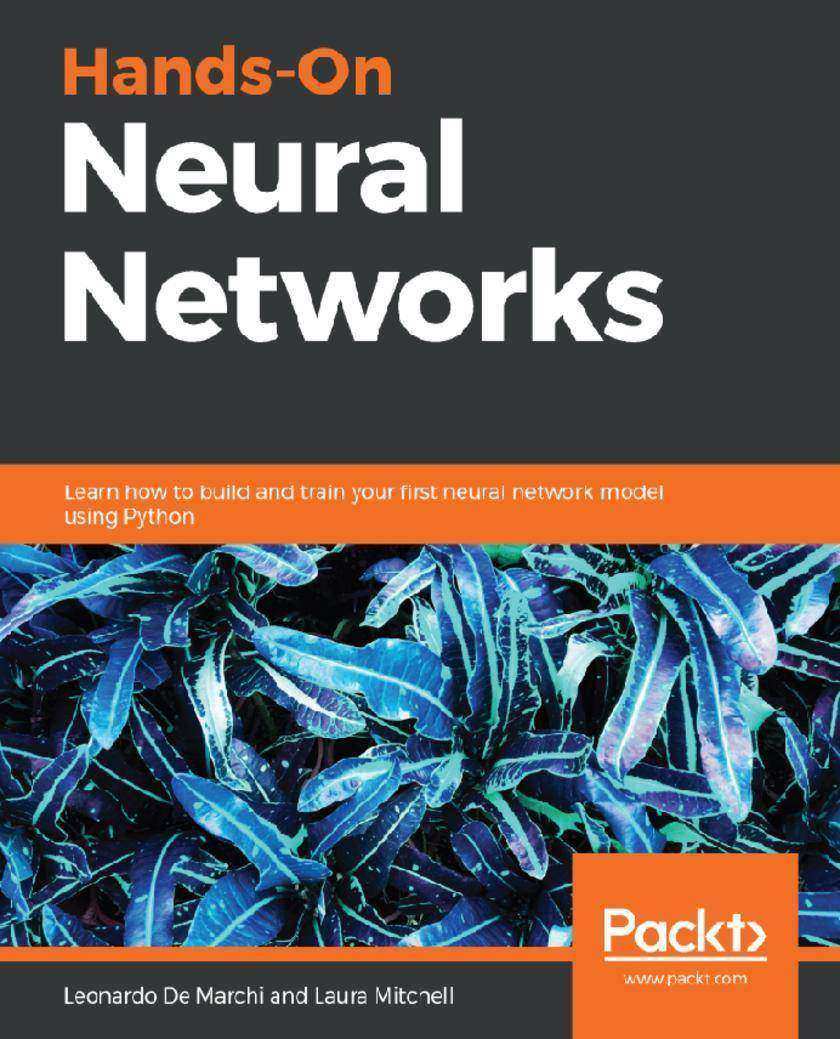
Hands-On Neural Networks
¥62.12
Design and create neural networks with deep learning and artificial intelligence principles using OpenAI Gym, TensorFlow, and Keras Key Features * Explore neural network architecture and understand how it functions * Learn algorithms to solve common problems using back propagation and perceptrons * Understand how to apply neural networks to applications with the help of useful illustrations Book Description Neural networks play a very important role in deep learning and artificial intelligence (AI), with applications in a wide variety of domains, right from medical diagnosis, to financial forecasting, and even machine diagnostics. Hands-On Neural Networks is designed to guide you through learning about neural networks in a practical way. The book will get you started by giving you a brief introduction to perceptron networks. You will then gain insights into machine learning and also understand what the future of AI could look like. Next, you will study how embeddings can be used to process textual data and the role of long short-term memory networks (LSTMs) in helping you solve common natural language processing (NLP) problems. The later chapters will demonstrate how you can implement advanced concepts including transfer learning, generative adversarial networks (GANs), autoencoders, and reinforcement learning. Finally, you can look forward to further content on the latest advancements in the field of neural networks. By the end of this book, you will have the skills you need to build, train, and optimize your own neural network model that can be used to provide predictable solutions. What you will learn * Learn how to train a network by using backpropagation * Discover how to load and transform images for use in neural networks * Study how neural networks can be applied to a varied set of applications * Solve common challenges faced in neural network development * Understand the transfer learning concept to solve tasks using Keras and Visual Geometry Group (VGG) network * Get up to speed with advanced and complex deep learning concepts like LSTMs and NLP * Explore innovative algorithms like GANs and deep reinforcement learning Who this book is for If you are interested in artificial intelligence and deep learning and want to further your skills, then this intermediate-level book is for you. Some knowledge of statistics will help you get the most out of this book.
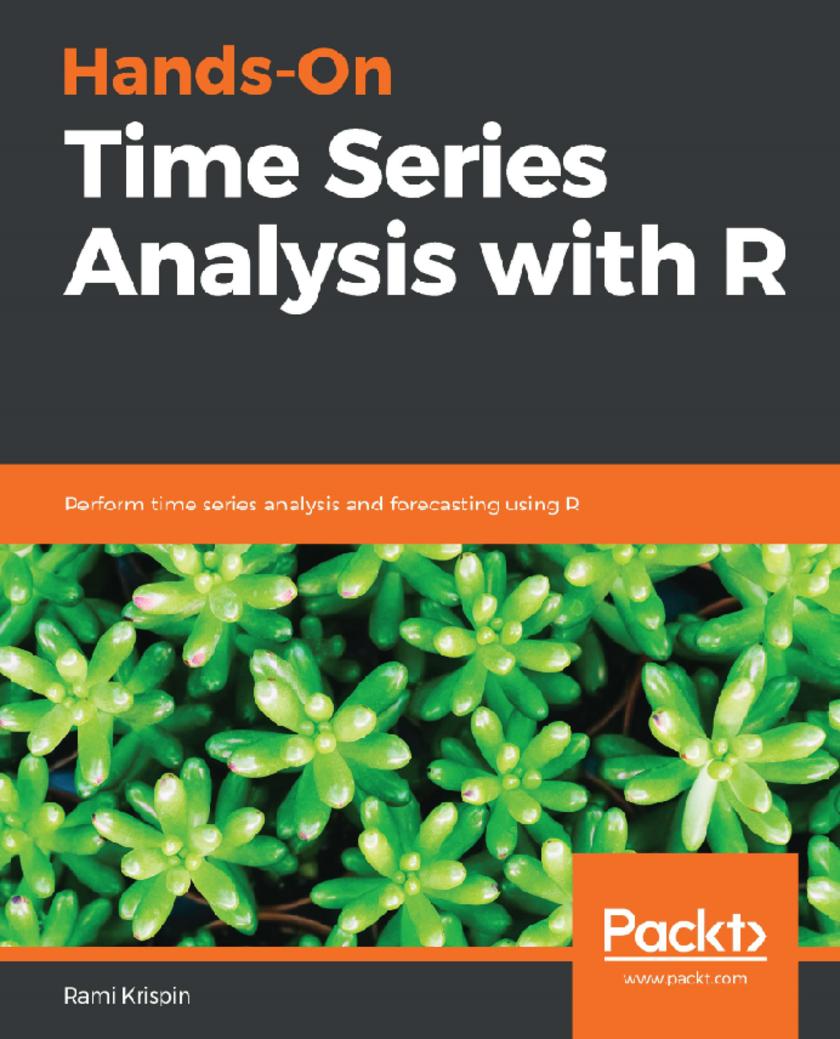
Hands-On Time Series Analysis with R
¥62.12
Build efficient forecasting models using traditional time series models and machine learning algorithms. Key Features * Perform time series analysis and forecasting using R packages such as Forecast and h2o * Develop models and find patterns to create visualizations using the TSstudio and plotly packages * Master statistics and implement time-series methods using examples mentioned Book Description Time series analysis is the art of extracting meaningful insights from, and revealing patterns in, time series data using statistical and data visualization approaches. These insights and patterns can then be utilized to explore past events and forecast future values in the series. This book explores the basics of time series analysis with R and lays the foundations you need to build forecasting models. You will learn how to preprocess raw time series data and clean and manipulate data with packages such as stats, lubridate, xts, and zoo. You will analyze data and extract meaningful information from it using both descriptive statistics and rich data visualization tools in R such as the TSstudio, plotly, and ggplot2 packages. The later section of the book delves into traditional forecasting models such as time series linear regression, exponential smoothing (Holt, Holt-Winter, and more) and Auto-Regressive Integrated Moving Average (ARIMA) models with the stats and forecast packages. You'll also cover advanced time series regression models with machine learning algorithms such as Random Forest and Gradient Boosting Machine using the h2o package. By the end of this book, you will have the skills needed to explore your data, identify patterns, and build a forecasting model using various traditional and machine learning methods. What you will learn * Visualize time series data and derive better insights * Explore auto-correlation and master statistical techniques * Use time series analysis tools from the stats, TSstudio, and forecast packages * Explore and identify seasonal and correlation patterns * Work with different time series formats in R * Explore time series models such as ARIMA, Holt-Winters, and more * Evaluate high-performance forecasting solutions Who this book is for Hands-On Time Series Analysis with R is ideal for data analysts, data scientists, and all R developers who are looking to perform time series analysis to predict outcomes effectively. A basic knowledge of statistics is required; some knowledge in R is expected, but not mandatory.
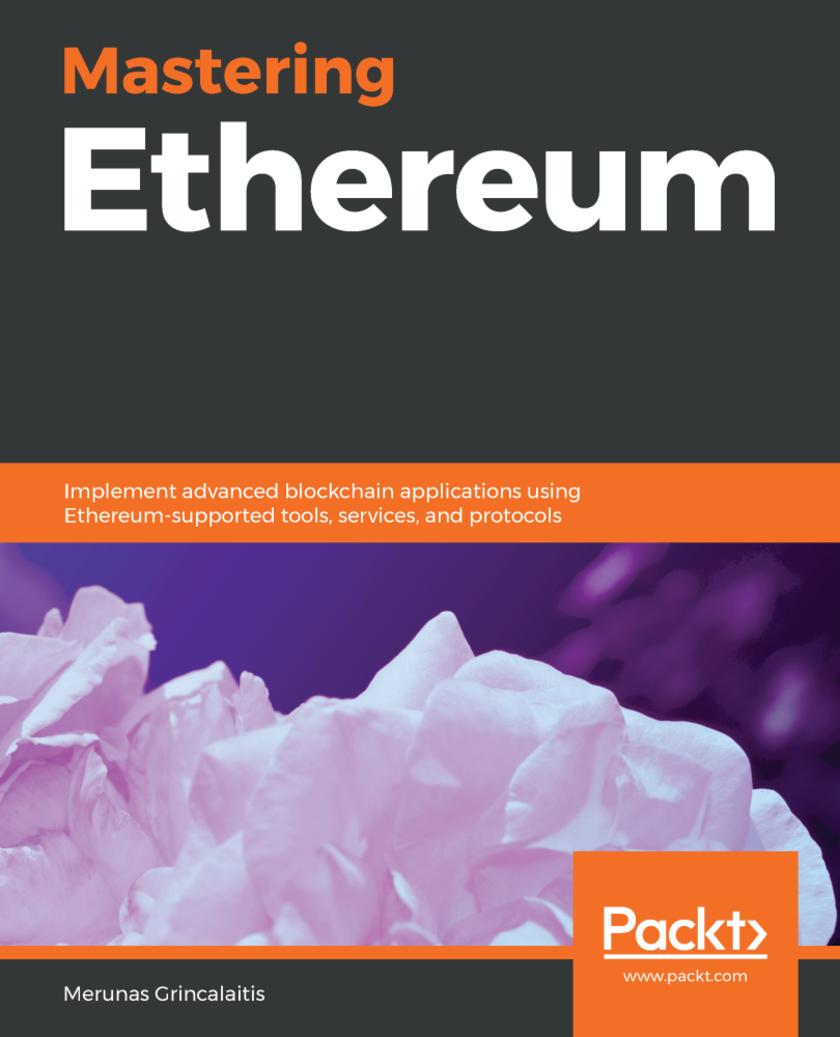
Mastering Ethereum
¥62.12
An expert guide to implementing fast, secure, and scalable decentralized applications that work with thousands of users in real time Key Features * Implement advanced features of the Ethereum network to build powerful decentralized applications * Build smart contracts on different domains using the programming techniques of Solidity and Vyper * Explore the architecture of Ethereum network to understand advanced use cases of blockchain development Book Description Ethereum is one of the commonly used platforms for building blockchain applications. It's a decentralized platform for applications that can run exactly as programmed without being affected by fraud, censorship, or third-party interference. This book will give you a deep understanding of how blockchain works so that you can discover the entire ecosystem, core components, and its implementations. You will get started by understanding how to configure and work with various Ethereum protocols for developing dApps. Next, you will learn to code and create powerful smart contracts that scale with Solidity and Vyper. You will then explore the building blocks of the dApps architecture, and gain insights on how to create your own dApp through a variety of real-world examples. The book will even guide you on how to deploy your dApps on multiple Ethereum instances with the required best practices and techniques. The next few chapters will delve into advanced topics such as, building advanced smart contracts and multi-page frontends using Ethereum blockchain. You will also focus on implementing machine learning techniques to build decentralized autonomous applications, in addition to covering several use cases across a variety of domains such as, social media and e-commerce. By the end of this book, you will have the expertise you need to build decentralized autonomous applications confidently. What you will learn * Apply scalability solutions on dApps with Plasma and state channels * Understand the important metrics of blockchain for analyzing and determining its state * Develop a decentralized web application using React.js and Node.js * Create oracles with Node.js to provide external data to smart contracts * Get to grips with using Etherscan and block explorers for various transactions * Explore web3.js, Solidity, and Vyper for dApps communication * Deploy apps with multiple Ethereum instances including TestRPC, private chain, test chain, and mainnet Who this book is for This book is for anyone who wants to build fast, highly secure, and transactional decentralized applications. If you are an Ethereum developer looking to perfect your existing skills in building powerful blockchain applications, then this book is for you. Basic knowledge of Ethereum and blockchain is necessary to understand the concepts covered in this book.
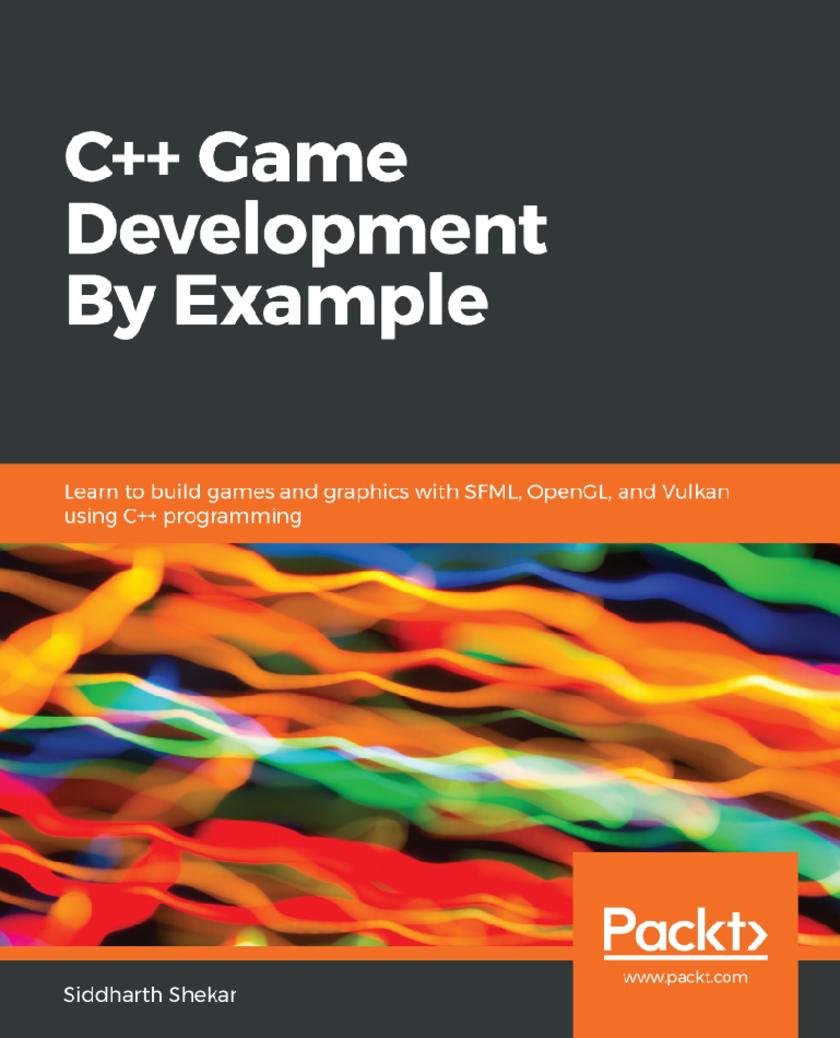
C++ Game Development By Example
¥62.12
Explore modern game programming and rendering techniques to build games using C++ programming language and its popular libraries Key Features * Learn how you can build basic 2D and complex 3D games with C++ * Understand shadows, texturing, lighting, and rendering in 3D game development using OpenGL * Uncover modern graphics programming techniques and GPU compute methods using the Vulkan API Book Description Although numerous languages are currently being used to develop games, C++ remains the standard for fabricating expert libraries and tool chains for game development. This book introduces you to the world of game development with C++. C++ Game Development By Example starts by touching upon the basic concepts of math, programming, and computer graphics and creating a simple side-scrolling action 2D game. You'll build a solid foundation by studying basic game concepts such as creating game loops, rendering 2D game scenes using SFML, 2D sprite creation and animation, and collision detection. The book will help you advance to creating a 3D physics puzzle game using modern OpenGL and the Bullet physics engine. You'll understand the graphics pipeline, which entails creating 3D objects using vertex and index buffers and rendering them to the scene using vertex and fragment shaders. Finally, you'll create a basic project using the Vulkan library that'll help you get to grips with creating swap chains, image views, render passes, and frame buffers for building high-performance graphics in your games. By the end of this book, you’ll be ready with 3 compelling projects created with SFML, the Vulkan API, and OpenGL, and you'll be able take your game and graphics programming skills to the next level. What you will learn * Understand shaders and how to write a basic vertex and fragment shader * Build a Visual Studio project and add SFML to it * Discover how to create sprite animations and a game character class * Add sound effects and background music to your game * Grasp how to integrate Vulkan into Visual Studio * Create shaders and convert them to the SPIR-V binary format Who this book is for If you’re a developer keen to learn game development with C++ or get up to date with game development, this book is for you. Some knowledge of C++ programming is assumed.

Learn D3.js
¥62.12
Explore the power of D3.js 5 and its integration with web technologies for building rich and interactive data visualization solutions Key Features * Explore the latest D3.js 5 for creating charts, plots, and force-directed graphics * Practical guide for creating interactive graphics and data-driven apps with JavaScript * Build Real-time visualization and transition on web using SVG with D3.js Book Description This book is a practical hands-on introduction to D3 (Data-driven Documents): the most popular open-source JavaScript library for creating interactive web-based data visualizations. Based entirely on open web standards, D3 provides an integrated collection of tools for efficiently binding data to graphical elements. If you have basic knowledge of HTML, CSS and JavaScript you can use D3.js to create beautiful interactive web-based data visualizations. D3 is not a charting library. It doesn’t contain any pre-defined chart types, but can be used to create whatever visual representations of data you can imagine. The goal of this book is to introduce D3 and provide a learning path so that you obtain a solid understanding of its fundamental concepts, learn to use most of its modules and functions, and gain enough experience to create your own D3 visualizations. You will learn how to create bar, line, pie and scatter charts, trees, dendograms, treemaps, circle packs, chord/ribbon diagrams, sankey diagrams, animated network diagrams, and maps using different geographical projections. Fundamental concepts are explained in each chapter and then applied to a larger example in step-by-step tutorials, complete with full code, from hundreds of examples you can download and run. This book covers D3 version 5 and is based on ES2015 JavaScript. What you will learn * Learn to use D3.js version 5 and web standards to create beautiful interactive data-driven visualizations for the web * Bind data to DOM elements, applying different scales, color schemes and configuring smooth animated transitions for data updates * Generate data structures and layouts for many popular chart formats * Apply interactive behaviors to any chart * Create thematic maps based on GIS data using different geographical projections with interactive behaviors * Load, parse and transform data from JSON and CSV formats Who this book is for The book is intended for web developers, web designers, data scientists, artists, and any developer who wish to create interactive data visualization for the Web using D3. The book assumes basic knowledge of HTML, CSs, and JavaScript.
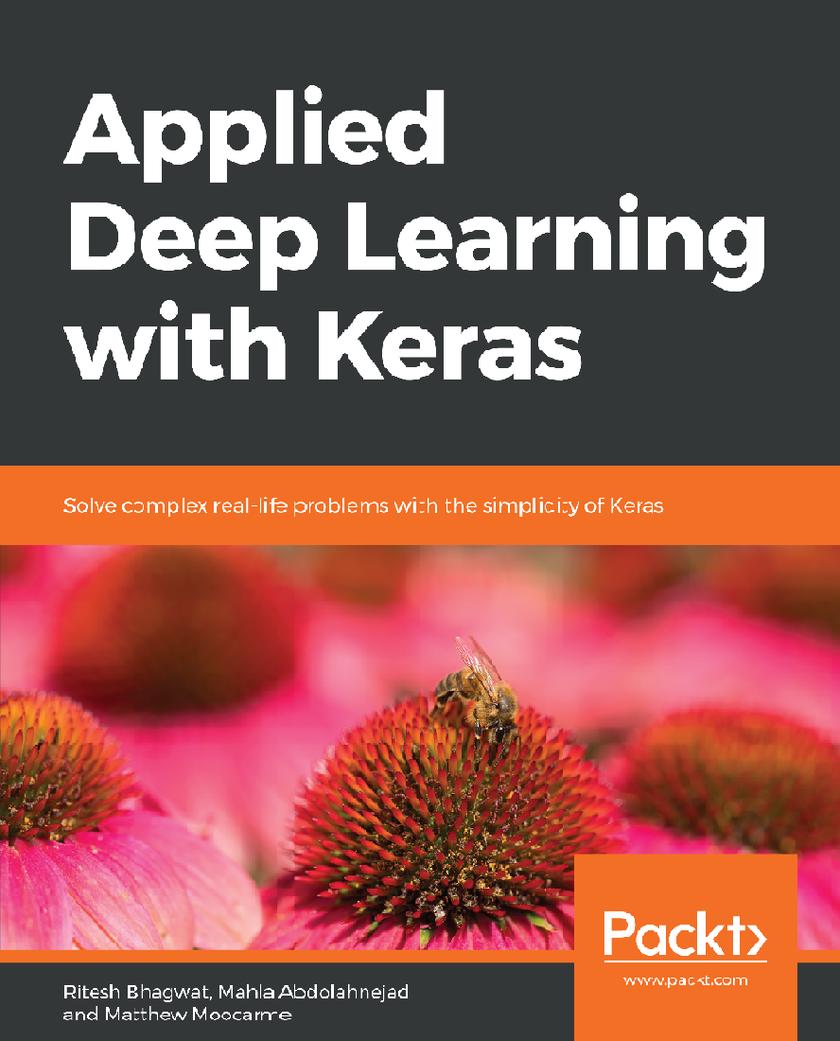
Applied Deep Learning with Keras
¥62.12
Take your neural networks to a whole new level with the simplicity and modularity of Keras, the most commonly used high-level neural networks API. Key Features * Solve complex machine learning problems with precision * Evaluate, tweak, and improve your deep learning models and solutions * Use different types of neural networks to solve real-world problems Book Description Though designing neural networks is a sought-after skill, it is not easy to master. With Keras, you can apply complex machine learning algorithms with minimum code. Applied Deep Learning with Keras starts by taking you through the basics of machine learning and Python all the way to gaining an in-depth understanding of applying Keras to develop efficient deep learning solutions. To help you grasp the difference between machine and deep learning, the book guides you on how to build a logistic regression model, first with scikit-learn and then with Keras. You will delve into Keras and its many models by creating prediction models for various real-world scenarios, such as disease prediction and customer churning. You’ll gain knowledge on how to evaluate, optimize, and improve your models to achieve maximum information. Next, you’ll learn to evaluate your model by cross-validating it using Keras Wrapper and scikit-learn. Following this, you’ll proceed to understand how to apply L1, L2, and dropout regularization techniques to improve the accuracy of your model. To help maintain accuracy, you’ll get to grips with applying techniques including null accuracy, precision, and AUC-ROC score techniques for fine tuning your model. By the end of this book, you will have the skills you need to use Keras when building high-level deep neural networks. What you will learn * Understand the difference between single-layer and multi-layer neural network models * Use Keras to build simple logistic regression models, deep neural networks, recurrent neural networks, and convolutional neural networks * Apply L1, L2, and dropout regularization to improve the accuracy of your model * Implement cross-validate using Keras wrappers with scikit-learn * Understand the limitations of model accuracy Who this book is for If you have basic knowledge of data science and machine learning and want to develop your skills and learn about artificial neural networks and deep learning, you will find this book useful. Prior experience of Python programming and experience with statistics and logistic regression will help you get the most out of this book. Although not necessary, some familiarity with the scikit-learn library will be an added bonus.
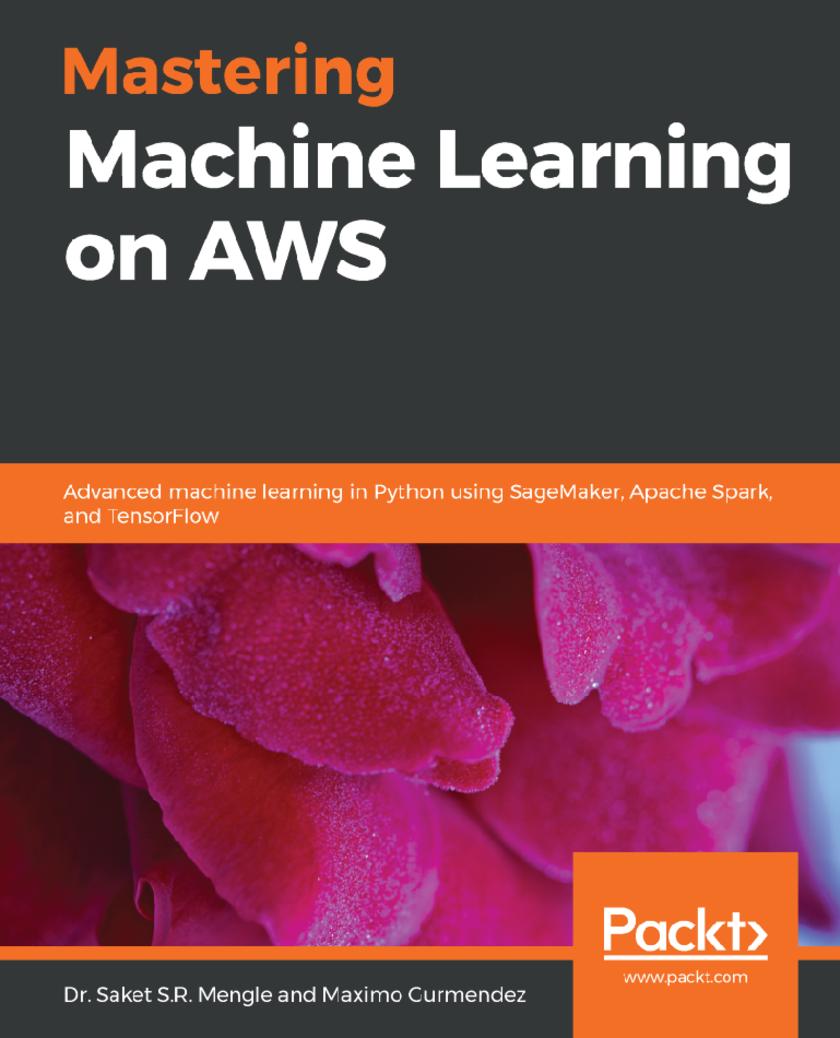
Mastering Machine Learning on AWS
¥62.12
Gain expertise in ML techniques with AWS to create interactive apps using SageMaker, Apache Spark, and TensorFlow. Key Features * Build machine learning apps on Amazon Web Services (AWS) using SageMaker, Apache Spark and TensorFlow * Learn model optimization, and understand how to scale your models using simple and secure APIs * Develop, train, tune and deploy neural network models to accelerate model performance in the cloud Book Description AWS is constantly driving new innovations that empower data scientists to explore a variety of machine learning (ML) cloud services. This book is your comprehensive reference for learning and implementing advanced ML algorithms in AWS cloud. As you go through the chapters, you’ll gain insights into how these algorithms can be trained, tuned and deployed in AWS using Apache Spark on Elastic Map Reduce (EMR), SageMaker, and TensorFlow. While you focus on algorithms such as XGBoost, linear models, factorization machines, and deep nets, the book will also provide you with an overview of AWS as well as detailed practical applications that will help you solve real-world problems. Every practical application includes a series of companion notebooks with all the necessary code to run on AWS. In the next few chapters, you will learn to use SageMaker and EMR Notebooks to perform a range of tasks, right from smart analytics, and predictive modeling, through to sentiment analysis. By the end of this book, you will be equipped with the skills you need to effectively handle machine learning projects and implement and evaluate algorithms on AWS. What you will learn * Manage AI workflows by using AWS cloud to deploy services that feed smart data products * Use SageMaker services to create recommendation models * Scale model training and deployment using Apache Spark on EMR * Understand how to cluster big data through EMR and seamlessly integrate it with SageMaker * Build deep learning models on AWS using TensorFlow and deploy them as services * Enhance your apps by combining Apache Spark and Amazon SageMaker Who this book is for This book is for data scientists, machine learning developers, deep learning enthusiasts and AWS users who want to build advanced models and smart applications on the cloud using AWS and its integration services. Some understanding of machine learning concepts, Python programming and AWS will be beneficial.
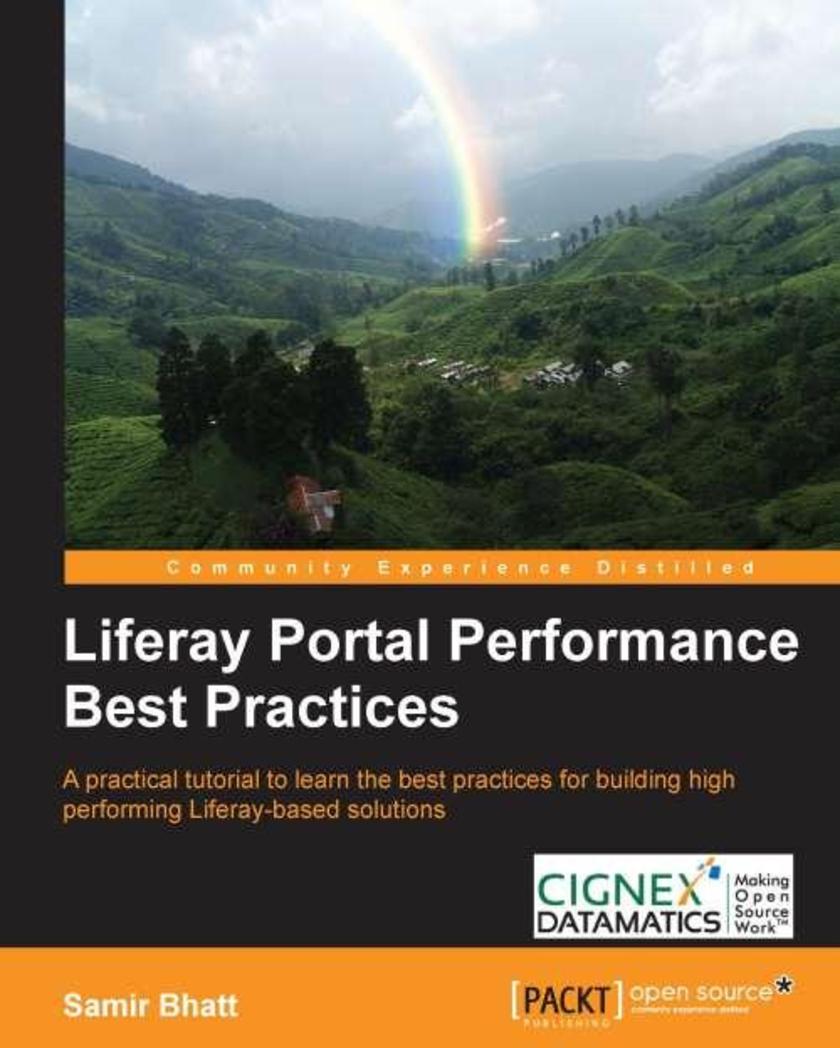
Liferay Portal Performance Best Practices
¥63.21
A step-by-step tutorial on implementing Liferay- based portals to learn performance best practices.The book is good for Liferay portal developers and architects who want to learn performance best practices for implementing Liferay- based solutions. It is assumed that you have a working knowledge of the Liferay portal.

Getting Started with Oracle Tuxedo
¥63.21
This book is packed with real world examples that cover the design and discipline of the software and service of CRMOD. If you are an architect, designer, developer or administrator looking for a quick reference guide on how to build a Tuxedo application, then this is the best guide for you. This book also helps business users to understand this technology, various features, and functionalities and relate business benefits. No prior knowledge of Tuxedo is required.
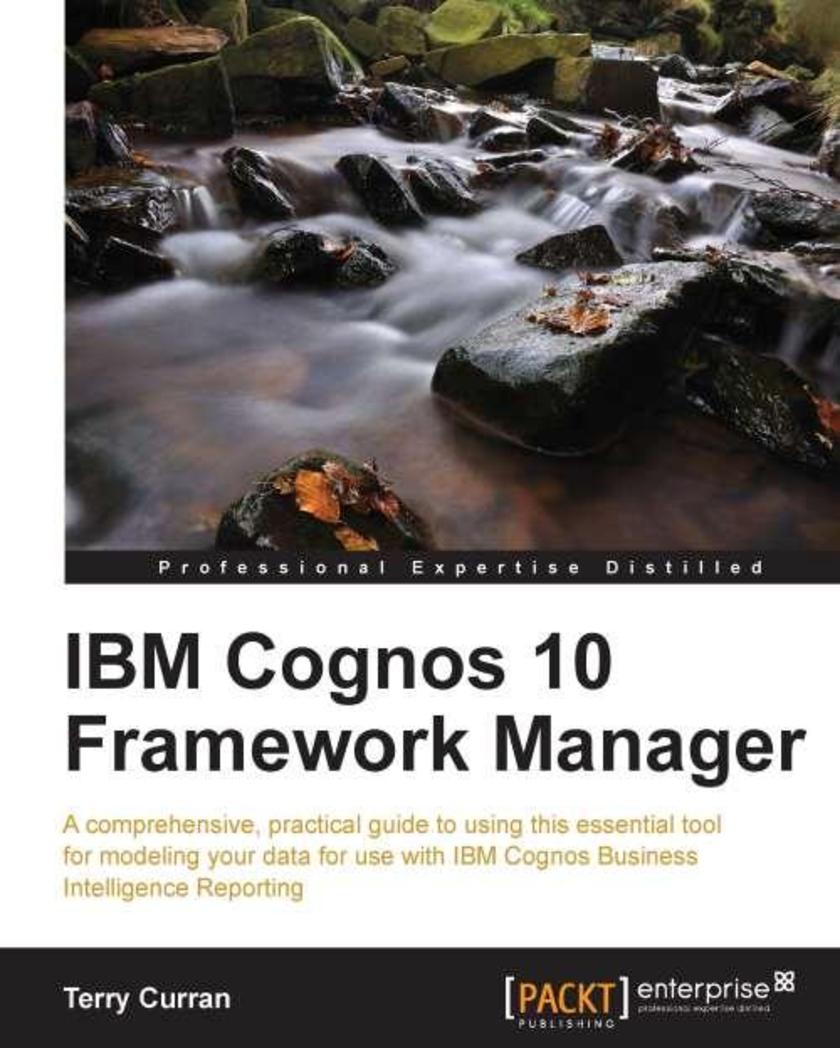
IBM Cognos 10 Framework Manager
¥63.21
Presented in a hands-on style, this guide presents you with real world examples to guide you through every process step by step.This book will be useful for any developer, novice or expert, who uses Framework Manager to build packages, but wants to expand their knowledge even further.
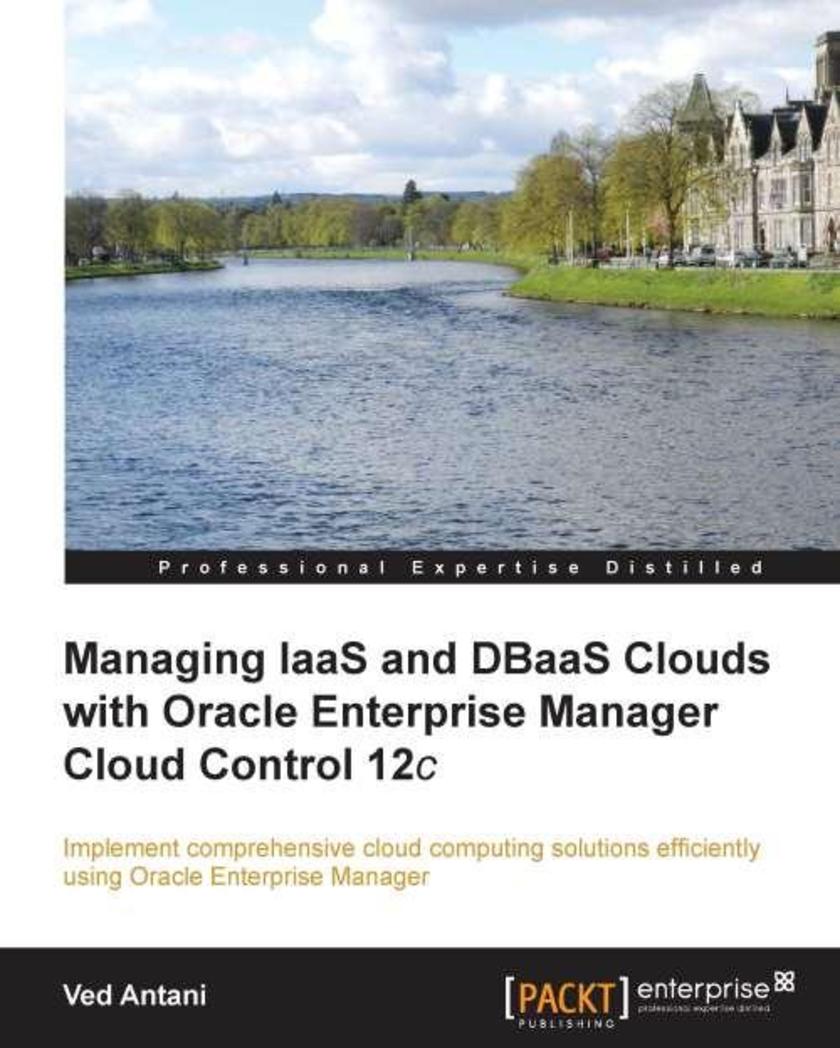
Managing IaaS and DBaaS Clouds with Oracle Enterprise Manager Cloud Control 12c
¥63.21
This book is a step-by-step tutorial filled with practical examples which will show readers how to configure and manage IaaS and DBaaS with Oracle Enterprise Manager.If you are a cloud administrator or a user of self-service provisioning systems offered by Enterprise Manager, this book is ideal for you. It will also help administrators who want to understand the chargeback mechanism offered by Enterprise Manager.An understanding of the basic building blocks of cloud computing such as networking, virtualization, storage, and so on, is needed by those of you interested in this book
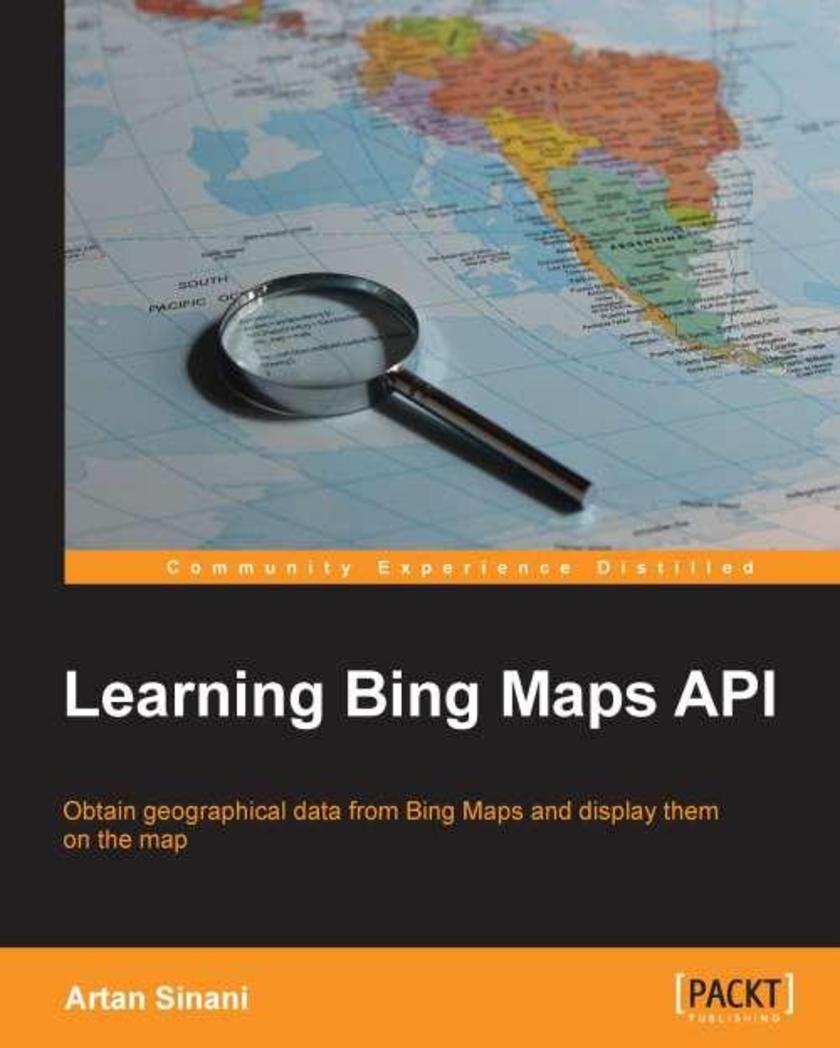
Learning Bing Maps API
¥63.21
This is a practical, hands-on guide with illustrative examples, which will help you explore the vast universe of Bing maps.If you are a developer who wants to learn how to exploit the numerous features of Bing Maps then this book is ideal for you. It can also be useful for more experienced developers who wish to explore other areas of the APIs. It is assumed that you have some knowledge of JavaScript, HTML, and CSS. For some chapters a working knowledge of .Net and Visual Studio is also needed.
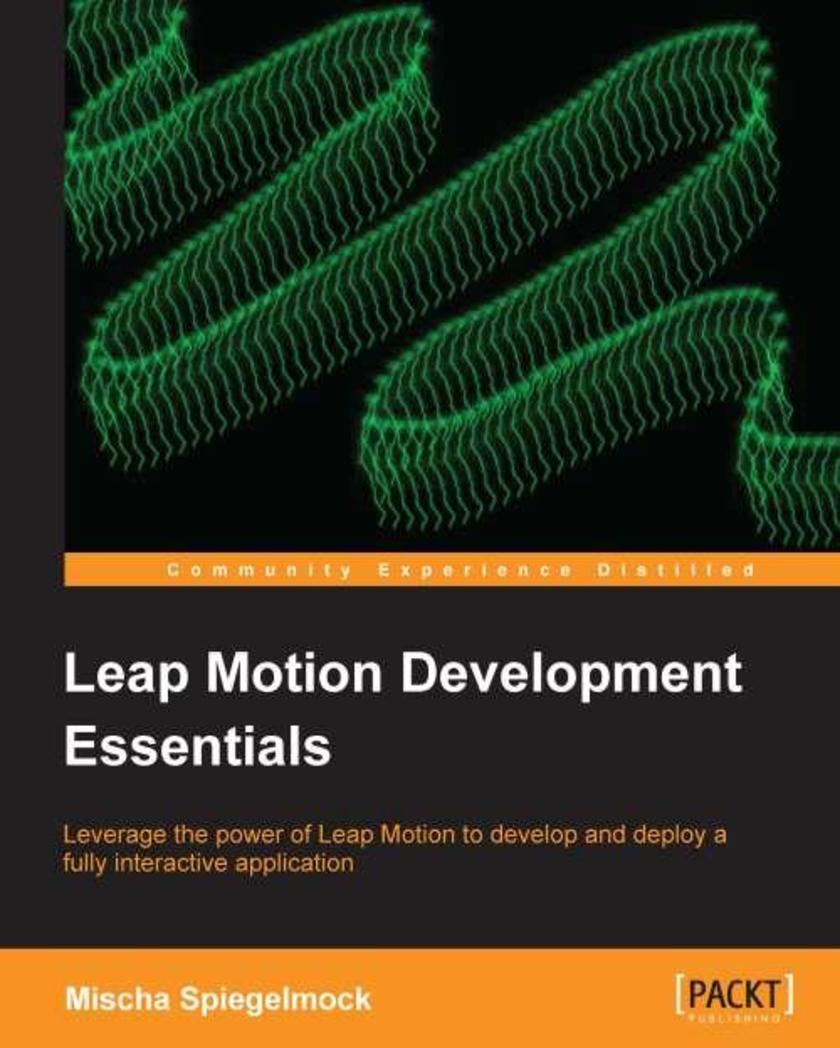
Leap Motion Development Essentials
¥63.21
This book is a fast-paced guide with practical examples that aims to help you understand and master the Leap Motion SDK.This book is for developers who are either involved in game development or who are looking to utilize Leap Motion technology in order to create brand new user interaction experiences to distinguish their products from the mass market. You should be comfortable with high-level languages and object-oriented development concepts in order to get the most out of this book.
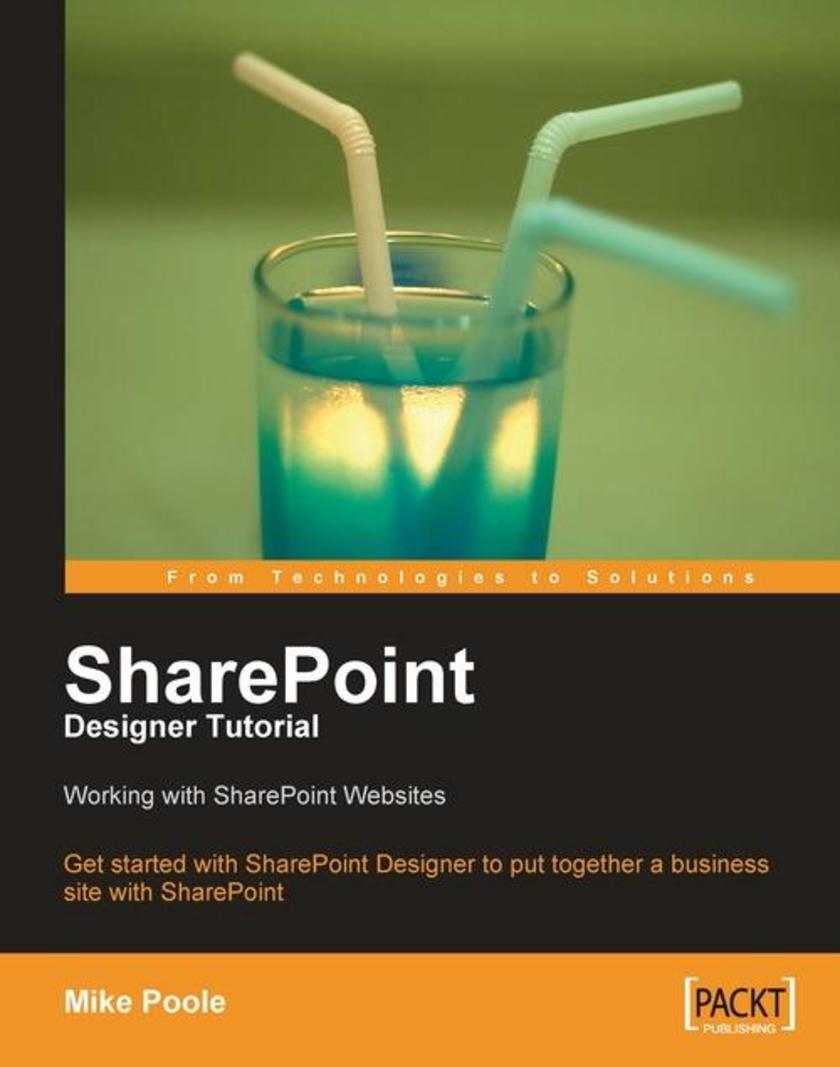
SharePoint Designer Tutorial: Working with SharePoint Websites
¥63.21
This book takes you through the development of a SharePoint site for a wine business. The development involves adding features to the site using SharePoint Designer, and for each of these features you will find screenshots and easy to follow instructions. This book is ideal for people new to SharePoint Designer who need to put together a working SharePoint site as quickly as possible. No experience of SharePoint Designer is expected, and no skill with creating SharePoint sites is assumed.
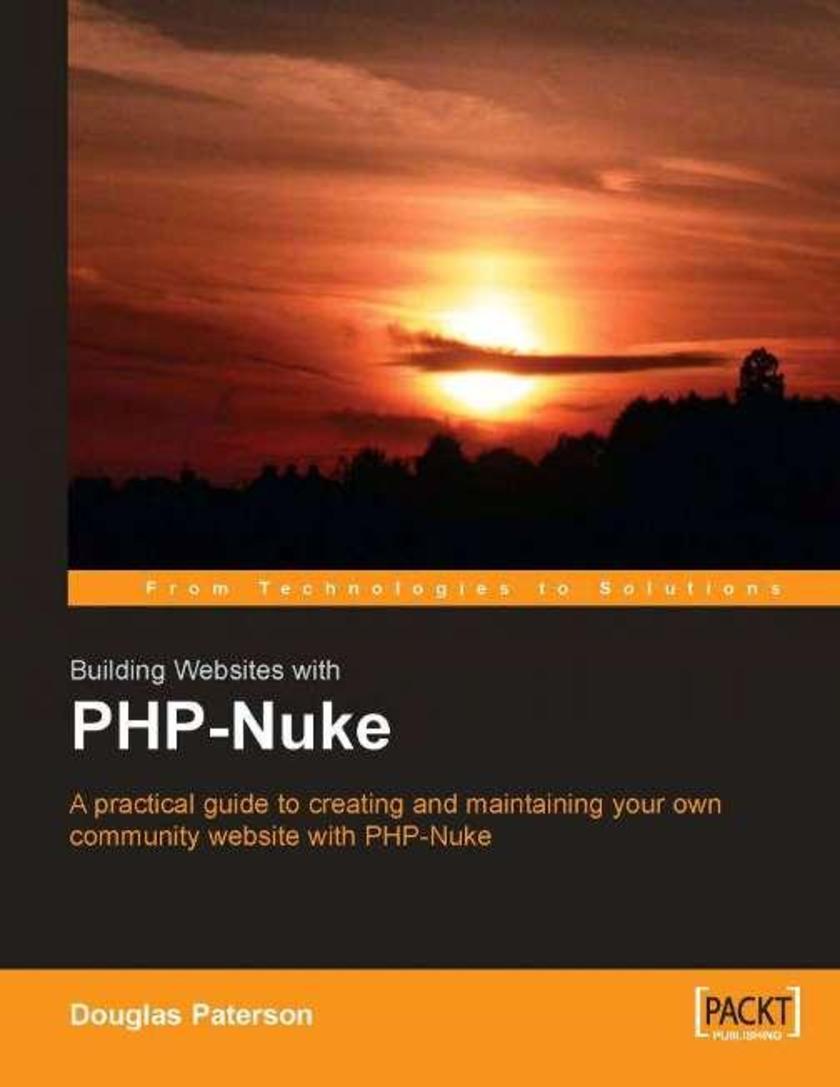
Building Websites with PHP-Nuke
¥63.21
Written in a clear, easy to read style, the book provides a tutorial on setting up a website with PHP-Nuke. Each topic is tackled in a clear, practical way with many examples to consolidate your learning. This book is written to help you create a fully-featured website as quickly as possible. Basic knowledge of HTML will help if you intend to explore customizing your own theme, and a basic knowledge of PHP will help if you want to get the most from the chapters on extending PHP-Nuke.
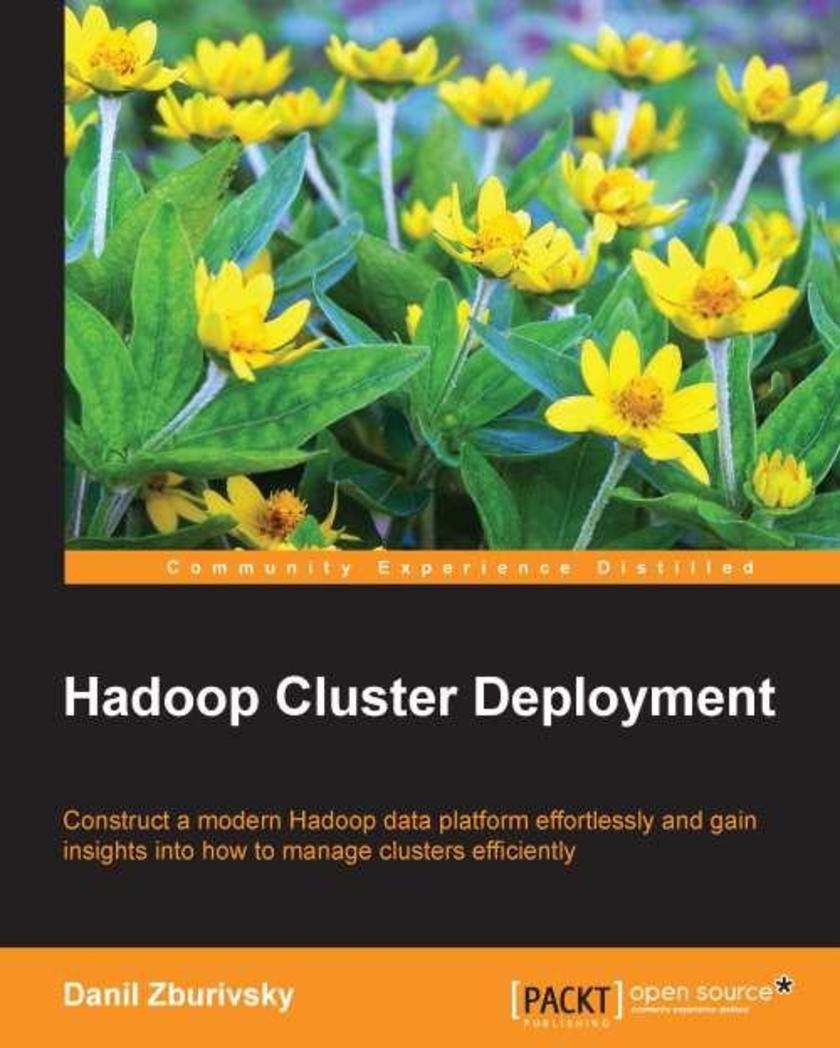
Hadoop Cluster Deployment
¥63.21
This book is a step-by-step tutorial filled with practical examples which will show you how to build and manage a Hadoop cluster along with its intricacies.This book is ideal for database administrators, data engineers, and system administrators, and it will act as an invaluable reference if you are planning to use the Hadoop platform in your organization. It is expected that you have basic Linux skills since all the examples in this book use this operating system. It is also useful if you have access to test hardware or virtual machines to be able to follow the examples in the book.
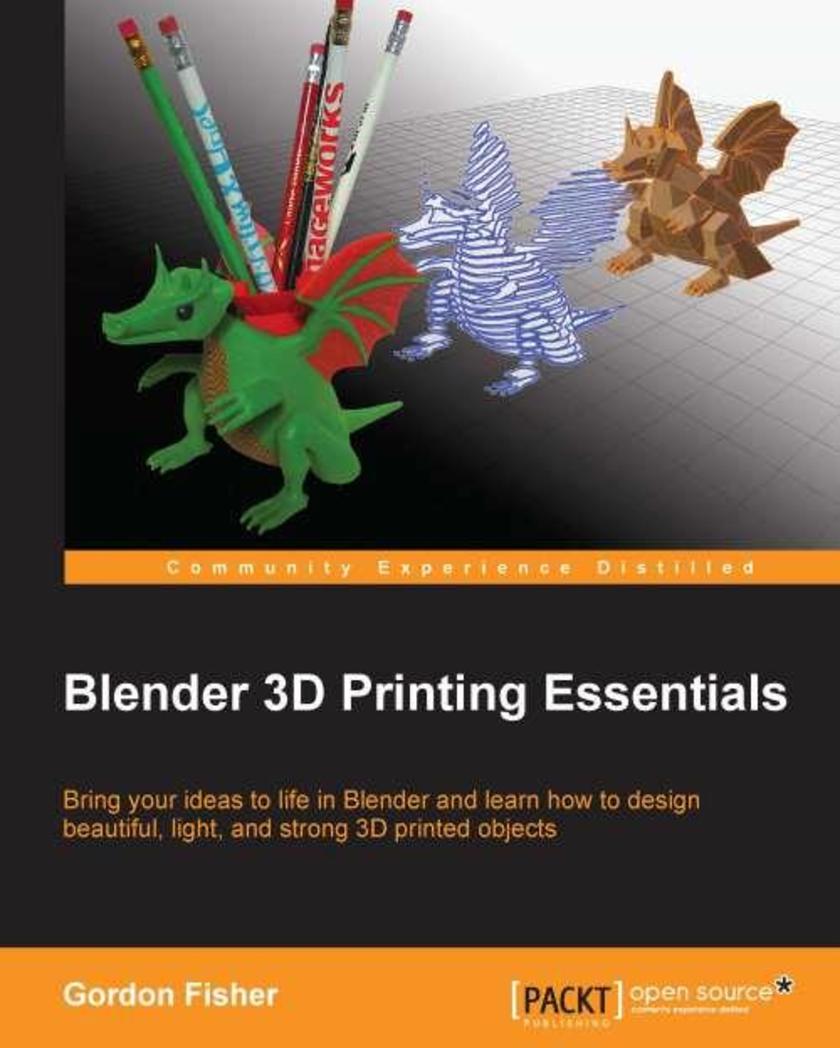
Blender 3D Printing Essentials
¥63.21
This book adopts a practical approach, with the use of step-by-step instructions to help guide readers. There are lots of screenshots covering each and every step needed to design a high-quality model in Blender for 3D printing.If you are a Blender user or someone who wants to use Blender to make 3D objects suitable for 3D printing, this book is ideal for you. You should already be comfortable with basic modeling in Blender - including using modifiers - although advanced skills are not required. All of the models that you will need are explored in-depth. This book does not assume that you will use any specific printer and teaches the general principles common to building models for most printers. It also gives you tips on discovering the requirements of the specific printer you will be using.
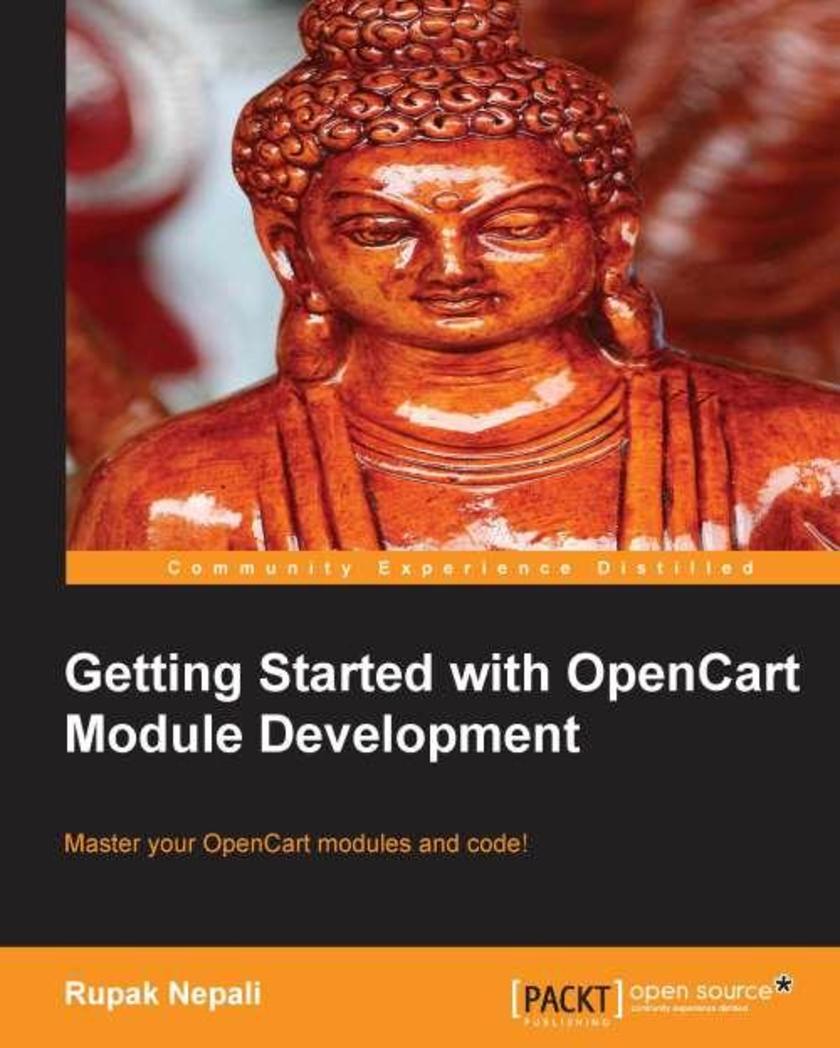
Getting Started with OpenCart Module Development
¥63.21
Written as a step-by-step guide, Getting Started with OpenCart Module Development will teach you all you need to know about OpenCart, from custom extensions to module development.This book is for developers who want to develop OpenCart extensions and for those who want to learn more about the code workflow of OpenCart. Basic knowledge of OpenCart would be an added advantage.




 购物车
购物车 个人中心
个人中心



